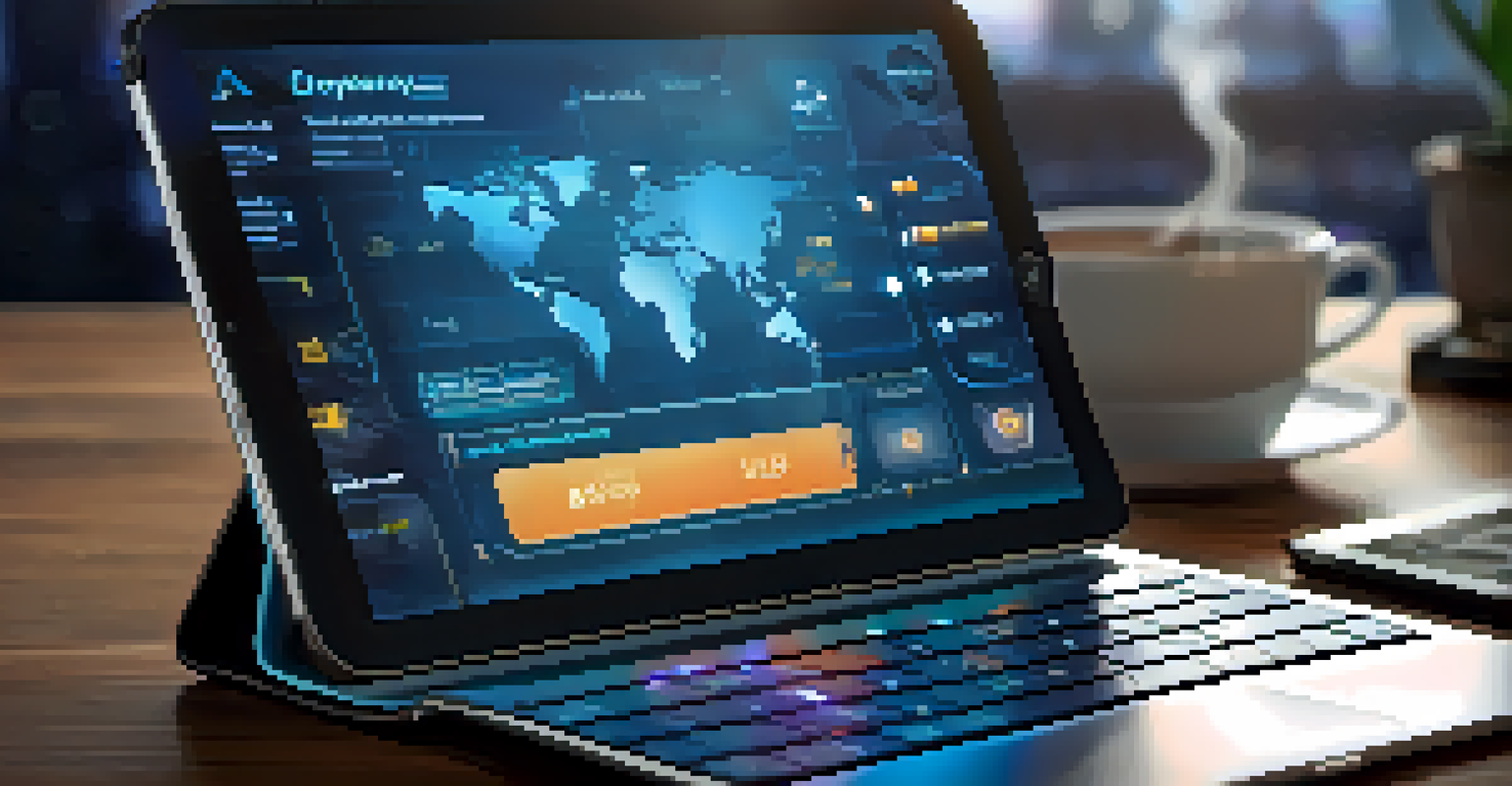Decentralized Finance (DeFi): Redefining Financial Services

What is Decentralized Finance (DeFi)?
Decentralized Finance, or DeFi, refers to a financial ecosystem built on blockchain technology. Unlike traditional finance, which relies on centralized institutions like banks, DeFi operates through smart contracts on decentralized networks. This means anyone with internet access can engage in financial transactions without needing a middleman, making finance more accessible.
Decentralized finance is a revolution in finance that removes the need for intermediaries and allows for direct transactions between users.
Imagine DeFi as a digital marketplace where you can buy and sell services directly with others, much like a farmer's market. In this space, you can lend, borrow, trade, or earn interest on your crypto assets without the limitations imposed by banks. This opens up opportunities for people worldwide, especially those in underbanked regions.
As DeFi continues to grow, it promises to reshape how we think about money and finance. With innovative solutions emerging daily, the potential for greater financial inclusion and efficiency is immense. It's an exciting time to delve into how these technologies are redefining our financial landscape.
Key Components of DeFi
DeFi comprises several key components that work together to create a holistic financial system. These include decentralized exchanges (DEXs), lending platforms, stablecoins, and yield farming protocols. Each component plays a vital role, allowing users to trade, lend, and earn on their crypto investments seamlessly.

For instance, decentralized exchanges like Uniswap allow users to trade cryptocurrencies directly without a central authority. This is akin to swapping baseball cards with friends rather than going through a store; you have more control over the transaction. Similarly, lending platforms like Aave enable users to lend their assets and earn interest, making money work for them.
DeFi Revolutionizes Finance Access
Decentralized Finance (DeFi) enables anyone with internet access to engage in financial transactions without relying on traditional banks.
Stablecoins, on the other hand, provide a stable value in the volatile crypto market, acting like a digital dollar. By understanding these components, users can navigate the DeFi landscape more effectively and take advantage of the many opportunities it offers.
Benefits of DeFi Over Traditional Finance
One of the most significant advantages of DeFi is its accessibility. Anyone with an internet connection can participate, breaking down barriers that traditional finance has often imposed. This democratization of finance allows individuals from all backgrounds to engage in financial activities without the cumbersome requirements of banks.
The future of finance is decentralized, and it is about providing financial services to everyone, everywhere.
Moreover, DeFi operates 24/7, unlike traditional banks, which have set hours. This constant availability empowers users to manage their finances at any time, similar to how you can shop online at any hour. Additionally, transactions in DeFi are often faster and cheaper, eliminating the lengthy processes and fees associated with conventional banking.
Transparency is another cornerstone of DeFi. All transactions are recorded on the blockchain, providing a level of openness that traditional finance struggles to match. This transparency fosters trust among users, as they can independently verify transactions without relying on a central authority.
Risks and Challenges in DeFi
While DeFi offers exciting opportunities, it is not without risks. One of the primary concerns is the potential for smart contract vulnerabilities. Since DeFi relies heavily on these self-executing contracts, any flaws in the code can lead to significant financial losses, much like a weak link in a chain that can break under pressure.
Additionally, the lack of regulation in the DeFi space poses risks for users. Without oversight, there is a higher chance of fraud and scams, which can lead to loss of funds. It's essential for users to conduct thorough research and be cautious, just as you would when choosing a financial advisor or investment opportunity.
Key Components of DeFi Explained
DeFi includes essential elements like decentralized exchanges and stablecoins, which facilitate trading, lending, and earning on crypto investments.
Market volatility is another challenge in the DeFi realm. Cryptocurrency prices can fluctuate wildly, affecting the value of assets and investments. Users must be aware of these dynamics and approach DeFi with a well-informed strategy to mitigate potential losses.
The Role of Stablecoins in DeFi
Stablecoins are a crucial element of the DeFi ecosystem as they provide stability in a volatile cryptocurrency market. By pegging their value to traditional currencies like the US dollar, stablecoins allow users to trade and transact without worrying about drastic price fluctuations. This stability acts like an anchor amidst the sea of volatility in the crypto world.
For example, using stablecoins like USDC or DAI enables users to engage in lending and borrowing without the anxiety of their asset's value changing overnight. It’s akin to using a reliable currency for everyday transactions rather than dealing with the wild ups and downs of other cryptocurrencies.
Furthermore, stablecoins facilitate seamless transactions across various DeFi platforms, enhancing liquidity and usability. They serve as a bridge between the traditional financial system and the decentralized world, making them an indispensable tool for users navigating this new landscape.
Future Trends in DeFi
As DeFi continues to evolve, several trends are emerging that could shape its future. One notable trend is the increasing integration of traditional finance with DeFi platforms, creating hybrid models that leverage the strengths of both systems. This merging promises to enhance the efficiency and reach of financial services.
Another trend is the rise of decentralized identity solutions, which aim to give users greater control over their personal information. Just as you might protect your physical identity documents, these solutions can help users securely manage their digital identities in the DeFi landscape.
Risks Involved in DeFi Participation
While DeFi offers numerous opportunities, users must be aware of risks such as smart contract vulnerabilities and market volatility.
Additionally, we can expect more user-friendly interfaces and tools to simplify the DeFi experience, making it accessible even for those new to crypto. As these developments unfold, the potential for DeFi to revolutionize financial services will only grow, inviting more users to explore its benefits.
Getting Started with DeFi
If you’re intrigued by the world of DeFi and want to dive in, getting started is easier than you might think. First, you’ll need a cryptocurrency wallet, which acts like a digital bank account for storing your crypto assets. There are many options available, such as MetaMask or Trust Wallet, that cater to different needs.
Once you have your wallet set up, you can start exploring various DeFi platforms to find services that interest you. Whether it’s lending, borrowing, or trading, platforms like Compound or Uniswap offer user-friendly interfaces to help you navigate the DeFi space. It’s similar to browsing an app store for the best applications that suit your lifestyle.

However, before jumping in, it’s crucial to educate yourself about the risks and mechanics of DeFi. Taking time to research and understand the platforms you’re using will pay off in the long run. Like any financial venture, a well-informed approach will help you make the most of the opportunities that decentralized finance has to offer.